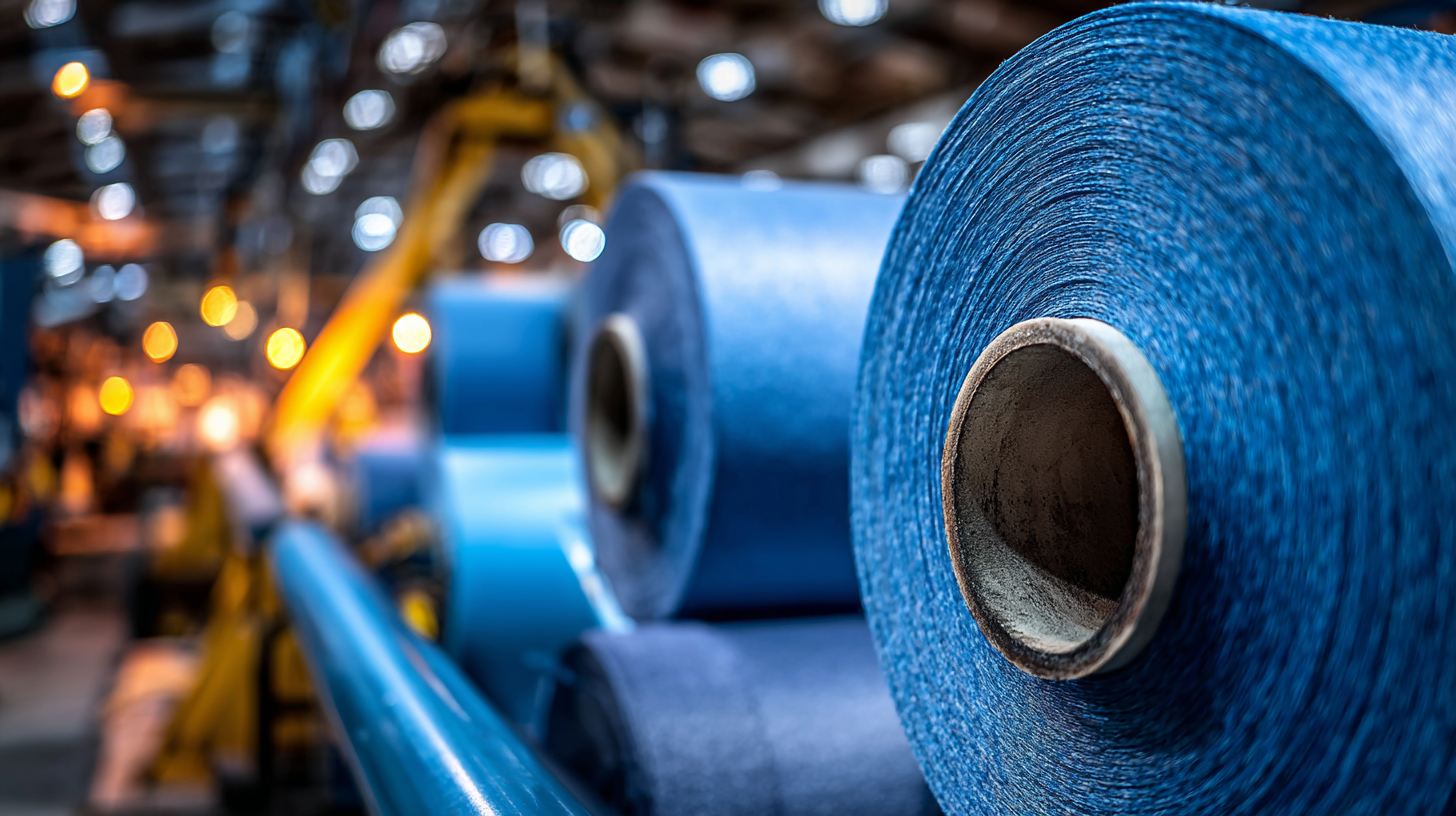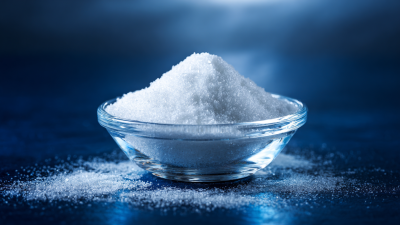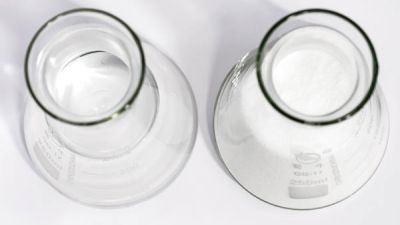How to Maximize After Sales Support and Minimize Maintenance Costs for Best Apam Anionic Polyacrylamide
Table of Contents
- Maximizing After Sales Support: Strategies for Apam Anionic Polyacrylamide Users
- Understanding Maintenance Costs: Key Factors in the Lifecycle of Anionic Polyacrylamide
- Emerging Technologies in 2025: Innovations Impacting After Sales Support
- Data-Driven Approaches to Reduce Maintenance Costs in Chemical Applications
- Best Practices for Customer Engagement in After Sales Support for Apam Products
- Analyzing Industry Trends: The Future of Anionic Polyacrylamide Demand and Support Needs
- Exploring the Benefits and Applications of Anionic Polyacrylamide in Water Treatment and Industrial Processes
- FAQS
- Related Posts
You know, in the world of chemical engineering that's always changing, Apam Anionic Polyacrylamide has really started to stand out. Industry reports are showing that its growth has been around 8.2% annually from 2020 to 2025—that's pretty impressive! Most of this growth is thanks to the rising need for effective water treatment solutions across different sectors like oil and gas, mining, and agriculture. Qingdao Oubo Chemical, which has been around since 2011, is doing some really interesting stuff by leading the way in supplying different types of polyacrylamide—cationic, anionic, and nonionic.

But here’s the thing: knowing how to get the most out of their after-sales support and keeping maintenance costs in check is super important. By using innovative techniques and providing solid customer service, companies can really boost how well Apam Anionic Polyacrylamide performs and lasts longer in various applications. That, in turn, helps lower operational costs and keeps everything running smoothly.
Maximizing After Sales Support: Strategies for Apam Anionic Polyacrylamide Users
Getting after-sales support right for folks using Anionic Polyacrylamide (APAM) is super important if we want to boost how well the product works and keep those maintenance costs in check. From what I’ve seen in recent reports, around 80% of users run into issues with applying the product or keeping it maintained—that’s when things can get pretty expensive and efficiency takes a hit. Having a solid support system in place can really make a difference here. Think things like offering detailed training sessions, creating manuals that are easy to follow, and even setting up a dedicated support line so users can get quick help when they need it.
Also, using data and customer feedback on a regular basis is a smart move for manufacturers. It helps them better understand what their clients really need. According to a report from MarketsandMarkets, companies that put a focus on after-sales support can cut their maintenance costs by as much as 15%. When manufacturers actually listen to users’ experiences and gather that info, they can give better advice and support. This way, customers can get the most out of APAM for all sorts of uses—be it treating wastewater, stabilizing soil, or drilling fluids. Taking this kind of proactive, strategic approach not only makes customers happier but also builds loyalty over the long haul, even in a pretty competitive market.

Understanding Maintenance Costs: Key Factors in the Lifecycle of Anionic Polyacrylamide
Getting a good handle on maintenance costs is pretty much vital if you want to make the most out of the entire lifecycle of Anionic Polyacrylamide (APAM). I came across a report from the Global Polyacrylamide Market that mentioned, if you have solid maintenance strategies in place, you could cut down operational expenses by as much as 30%. That’s a pretty big deal, especially in industries like wastewater treatment or enhanced oil recovery where APAM plays a big role. The way you keep and use it directly impacts the success of your project and your bottom line.
A few key things really influence those maintenance costs — stuff like the quality of the APAM you’re using, how often you’re deploying it, and the conditions it faces while in use. For example, there’s a study from the American Chemical Society showing that opting for high-quality APAM formulations can really pay off because they’re more stable and last longer—so you don’t have to replace or repair as often. Plus, environmental stuff like temperature swings and chemical exposure can seriously impact how well APAM performs and how long it lasts. That’s why it’s super important for operators to think about these factors early on during planning, so costs stay in check. Keeping an eye on things and making adjustments as needed can save you a ton of money and help things run more smoothly overall.
Emerging Technologies in 2025: Innovations Impacting After Sales Support
Looking ahead to 2025, it’s clear that emerging technologies are really going to shake up after-sales support—especially in the chemical industry. Innovation is all about making operations smoother and boosting how customers experience service. If you’ve been reading recent industry reports, you probably saw that companies are pouring more money into IT and investing in AI. That’s driving some serious transformation. For those in the chemical game, like producers of Anionic Polyacrylamide, leveraging AI can automate a lot of support tasks. This not only cuts down on maintenance costs but also keeps customers happier than ever.
For example, setting up AI-powered chatbots to handle customer questions around the clock is a game-changer—they can answer inquiries quickly and save a ton of time. Plus, predictive maintenance tools are perfect for spotting equipment issues before they become big problems, which means less downtime and fewer expenses.
On the life sciences front, digital transformation is also proving to be a game-changer in after-sales support. By weaving digital tools and data analytics into everyday operations, companies can get deep insights, streamline their service processes, and boost product reliability. Focusing on these tech advancements isn’t just smart—it's essential for staying competitive and building stronger customer relationships.
And here’s a little tip: regularly training your support team on new tech can dramatically boost their skills and help deliver top-notch service. Also, keeping an eye on customer feedback through analytics can help you refine your after-sales strategies and keep improving all the time.
Data-Driven Approaches to Reduce Maintenance Costs in Chemical Applications
Using data-driven approaches in chemical processes can really help cut down maintenance costs, especially when it comes to products like Anionic Polyacrylamide (APAM). I mean, if you look at the MarketsandMarkets report, it predicts the global polyacrylamide market will hit around $7 billion by 2025 — and a big chunk of that comes from its role in wastewater treatment and oil recovery. By tapping into data analytics, manufacturers and users can keep tabs on equipment performance in real-time, find potential issues before they become big problems, and tweak maintenance schedules accordingly. This way, they can avoid unexpected downtime and those costly repairs.

Now, the coolest part? Predictive maintenance can really save money. A McKinsey study shows it can cut maintenance costs by anywhere from 10% to 40% and boost equipment uptime by 10% to 20%. Thanks to IoT sensors and machine learning, companies can sift through loads of operational data, helping them make smarter decisions about how they use and maintain their APAM systems. Putting this tech into play not only improves after-sales support but also makes the whole process way more efficient, leading to a more sustainable way of running things.
Best Practices for Customer Engagement in After Sales Support for Apam Products
If you're in the business of selling Anionic Polyacrylamide (APAM), you’ll quickly realize that keeping your customers happy after the sale is a total game-changer. A recent report from the Chemical Management Association mentioned that companies putting real effort into customer support can see their revenues jump by up to 25%. Honestly, staying in touch with your customers after they buy not only builds loyalty but also boosts their overall satisfaction — which, let’s be honest, is super important when competing with others out there. You can do this in all sorts of ways, like personal follow-ups, sharing useful tips on using the product, or just making sure communication channels are open and responsive.
And here’s the cool part — solid after-sales support can actually save you money too. According to some research from McKinsey & Company, businesses that nail their after-sales service can cut down operational costs by around 15% to 20%. When you’re quick to answer questions and solve issues before they snowball, you’re not only making your customers happier but also preventing costly repairs and downtime. Plus, by asking for feedback on how folks are finding your APAM products, you gather some pretty valuable insights. Those can help you decide what to improve or how to tweak your maintenance plans for next time. Basically, good customer engagement isn’t just good for relationships – it’s smart business, plain and simple.
How to Maximize After Sales Support and Minimize Maintenance Costs for Best Apam Anionic Polyacrylamide
| Aspect | Best Practices | Expected Outcomes | Maintenance Cost Impact |
|---|---|---|---|
| Customer Communication | Regular updates and feedback requests | Increased customer satisfaction | Lower service call frequency |
| Technical Support | 24/7 support hotline | Faster issue resolution | Reduced downtime |
| Training Programs | Customer training sessions | Enhanced product knowledge | Decreased operational mistakes |
| Feedback Mechanism | Regular surveys and feedback forms | Identification of improvement areas | Lowered complaint resolution costs |
| Preventive Maintenance | Scheduled check-ups | Reduced unexpected failures | Significantly reduced repair costs |
Analyzing Industry Trends: The Future of Anionic Polyacrylamide Demand and Support Needs
You know, the demand for anionic polyacrylamide (APAM) is really picking up lately. It’s mainly because of how useful it is in things like water treatment, oil recovery, and even soil stabilization. I came across a report from Grand View Research that says the global market for APAM could hit about $5.9 billion by 2025, growing at a pretty steady rate of around 6.7% annually. This boom is pretty much driven by the rising need to manage water more efficiently and to improve oil recovery methods. As industries move toward more sustainable practices, the demand for APAM is only going to grow, especially as folks look for greener solutions.
But here’s the thing—just ramping up production isn’t enough. Companies also need to put effort into offering solid after-sales support. A recent study from Market Research Future pointed out that customers really value suppliers who give thorough technical help and maintenance. When companies step up their after-sales game, they don’t just keep their clients happy—they actually build loyalty and can cut down on maintenance costs too. So, by providing good training and quick, friendly customer service, manufacturers can make sure their clients are always confident using APAM the right way. It’s all about supporting your customers as the industry gears up to face future challenges in chemical applications.
Exploring the Benefits and Applications of Anionic Polyacrylamide in Water Treatment and Industrial Processes
Anionic Polyacrylamide (APAM) is a versatile water-soluble polymer that is making significant strides in water treatment and various industrial processes. Its unique ability to function as a flocculating agent allows it to facilitate the aggregation of particles in water, making it an essential component for industries seeking to enhance water clarity and quality. In neutral and alkaline environments, APAM exhibits excellent polymer electrolyte characteristics, which boost its efficacy in coagulating and settling suspended solids.
Beyond its applications in water treatment, Anionic Polyacrylamide is gaining traction in the mining sector, where it plays a crucial role in improving the efficiency of mineral recovery processes. The polymer's ability to reduce frictional resistance between liquids makes it invaluable for enhancing slurry flow during operations. Moreover, its environmental compatibility ensures that it can be used without posing significant risks to aquatic ecosystems, making it a preferred choice for industries aiming to uphold sustainability standards.
The widespread adoption of APAM in industrial processes illustrates its multifaceted benefits. From improving operational efficiencies to promoting cleaner water bodies, Anionic Polyacrylamide stands out as a potent ally in tackling some of the most pressing challenges faced by today's industries. Its remarkable properties not only enhance performance but also contribute to a more environmentally friendly approach, aligning with global efforts towards pollution reduction and resource management.
FAQS
nionic Polyacrylamide (APAM) products?
Key factors include the quality of APAM products, frequency of usage, and environmental conditions during application, as these elements directly impact product integrity and performance.
High-quality APAM formulations improve stability and service life, which reduces the need for frequent replacements or repairs, ultimately lowering maintenance costs.
Factors such as temperature and chemical exposure can significantly affect the efficacy and durability of APAM, so these need to be taken into account during the initial planning stages.
Effective after-sales support can enhance customer satisfaction and loyalty, and can also lower operational costs by approximately 15% to 20% by addressing issues proactively.
Strategies include personalized follow-ups, providing educational content on product usage, and establishing responsive communication channels to enhance customer relationships.
The demand for APAM is projected to grow, with the global market potentially reaching USD 5.9 billion by 2025, driven by increased water treatment needs and enhanced oil recovery practices.
Customers prioritize suppliers that offer comprehensive technical assistance and maintenance services, which can significantly enhance loyalty and customer satisfaction.
Manufacturers can implement efficient training programs and ensure responsive customer service to equip clients for effective APAM utilization, maximizing product performance.
Continuous monitoring and timely adjustments based on influencing factors can lead to substantial savings and improved operational efficiency, minimizing downtime and repair expenses.
Related Posts
-

How to Optimize Your Processes with Best Anionic Polyacrylamide Tech Grade for Maximum Efficiency
-

Unlocking the Future of Water Treatment with Best Flocculant Anionic Nonionic Polyacrylamide Trends for 2025
-

Market Trends and Forecast for Best Polyacrylamide Emulsion by 2025
-

Choosing the Right Manufacturer for Best High Molecular Weight Anionic Polyacrylamide with Industry Insights
-

Future Market Insights on Best High Impact Polymer and How to Leverage Opportunities by 2025
Blog Tags:

Liam
-

Phone
-

E-mail
-

Whatsapp
-

WeChat
Jessy Lin
Paul Zhou:8613356391894 Eric Wong:8615963245439Emily Wu:8617866856171
-

WeChat
Paul Zhou

-

WeChat
Eric Wong

-

WeChat
Emily Wu









